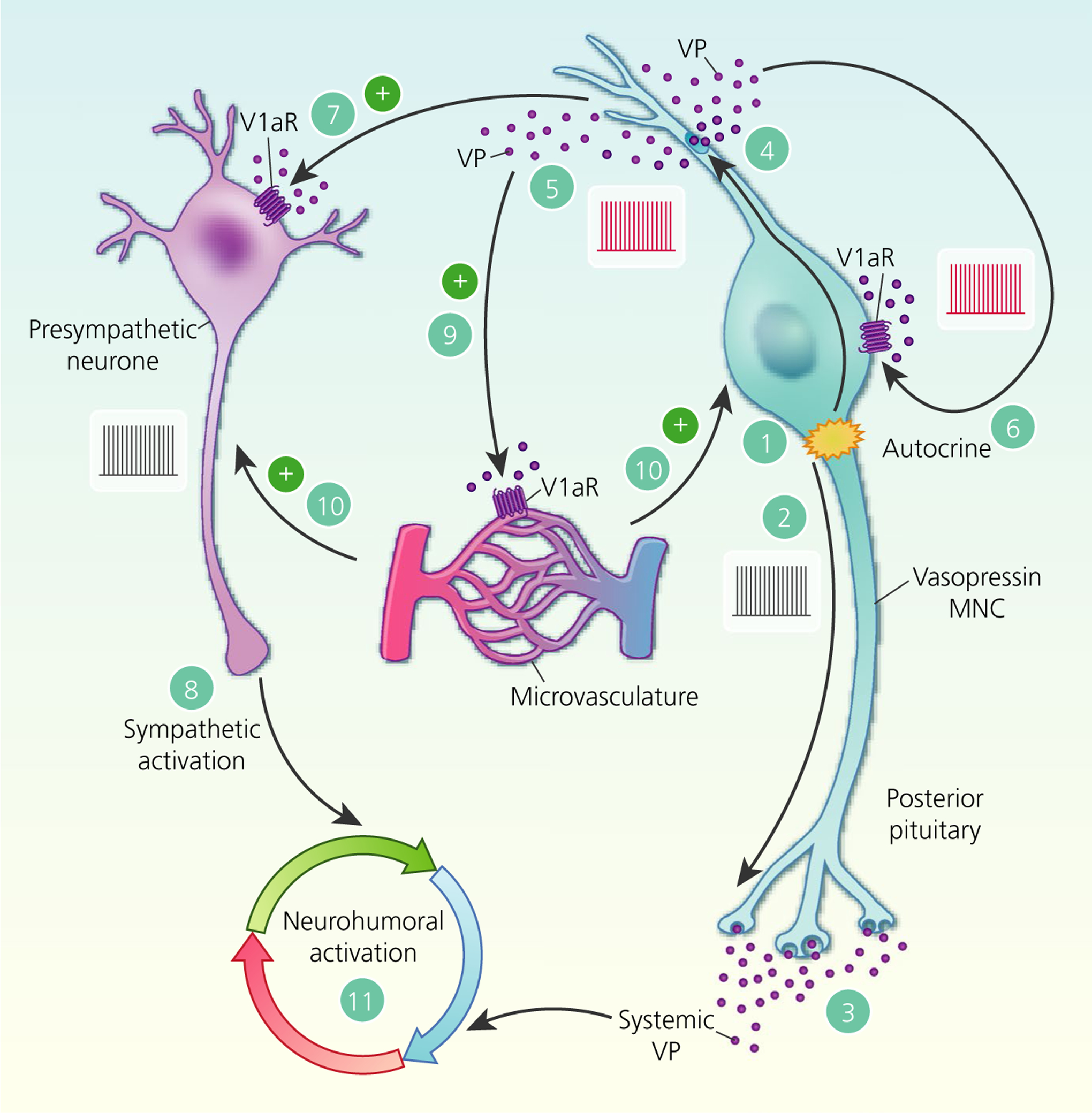FIGURE 7.

Paracrine actions of somato-dendritic vasopressin (VP) secretion. Activation of neurosecretory vasopressin magnocellular neurosecretory cells (MNCs) (1) triggers action potential firing (2) to release vasopressin into the circulation from the posterior pituitary gland (3). In parallel, action potentials back-propagate into the dendrites (4) to trigger somato-dendritic vasopressin secretion (5). In addition to autocrine feedback inhibition of vasopressin MNC activity via V1a receptors (V1aRs) (6), somato-dendritic vasopressin diffuses through the extracellular space to bind to V1aRs on presympathetic paraventricular nucleus neurones (7) to increase action potential firing (8) and therefore increase sympathetic outflow to peripheral organs. Somato-dendritic vasopressin also activates V1aRs on local blood vessels (9) to cause vasoconstriction, which is predicted to inhibit vasopressin MNCs at a population level (10) by restricting the availability of oxygen and nutrients. Hence, somato-dendritic vasopressin secretion coordinates neurohumoral responses to (patho)physiological activation (11)
